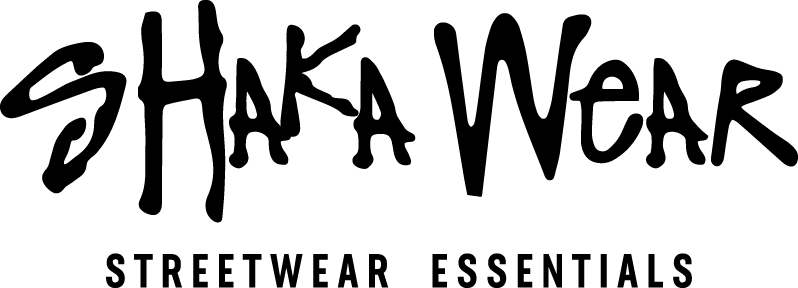What surfaces can be printed using DTF technology?

Posted by AllDayShirts on to Printing Business Tips, Printing Techniques.
What surfaces can be printed using DTF technology?
Introduction
Direct to Film (DTF) printing technology is rapidly emerging as a game-changer in the world of digital printing. This innovative method involves printing a design onto a special film and then transferring it directly onto a variety of surfaces. Unlike traditional printing techniques, DTF offers unparalleled flexibility and ease, allowing for high-quality prints on materials where other methods fall short. The growing popularity of DTF printing is a testament to its versatility, opening up new possibilities for both commercial and personal use. From custom apparel to unique home decor, the potential applications of DTF are vast and continually expanding. This technology is not just revolutionizing the printing industry; it's redefining what's possible. As we delve deeper into the world of DTF, join us in discovering how this cutting-edge technology is transforming the landscape of printing across various surfaces.
Understanding DTF Technology
At its core, the Direct to Film (DTF) printing process is distinguished by its unique method of transferring designs. Unlike Direct to Garment (DTG) printing, which applies ink directly onto fabric, DTF prints onto a special film that is later pressed onto the surface. This key difference opens up a world of possibilities, allowing DTF to work seamlessly on a broader range of materials, including those not compatible with DTG.
The DTF printing process begins with printing a design onto a PET film, followed by the application of a powder adhesive. Once the print is heat-pressed onto the desired surface, the result is a vibrant, durable, and flexible design. This versatility is one of the primary advantages of DTF technology. It enables high-quality printing on textiles of varying compositions, from cotton to polyester, and extends to non-textile surfaces like wood, ceramics, and more.
Comparatively, DTF stands out against other printing methods like screen printing or sublimation. Screen printing, though excellent for large batches, lacks the ease and detail that DTF can provide, especially for small or custom orders. Sublimation, on the other hand, is limited to polyester fabrics and light backgrounds. DTF's ability to print on a wider range of materials, including dark fabrics, makes it a more versatile and user-friendly option. The "DTF printing process" not only offers "advantages in DTF technology" in terms of material compatibility but also excels in print quality, durability, and color vibrancy.
Common Surfaces for DTF Printing
Textiles: Revolutionizing Fabric Printing
- Cotton and Polyester: DTF shines in its ability to print on various textiles, notably cotton and polyester. The process involves the film adhering to the fabric under heat, resulting in vibrant and lasting prints. This versatility makes "DTF on fabric" a preferred choice for diverse clothing items.
- Quality on Textiles: Whether it's intricate designs on cotton tees or bold graphics on polyester sportswear (New A4 Sports Apparel), DTF ensures high-resolution prints with excellent color fidelity and wash durability.
Hard Surfaces: Expanding Beyond Textiles
- Ceramics: "DTF on ceramics" is another realm where this technology excels. It can produce detailed, full-color images on ceramic products, making it ideal for personalized dishes or decorative tiles.
- Glass and Metals: Glass and metal surfaces are not left out. DTF transfers adhere well to these materials, offering opportunities for customized kitchenware, signage, and more.
- Wood: Even wood, known for its challenging surface, can be effectively printed on using DTF, opening doors for custom furniture or artisan crafts.
Adhesion and Quality Across Surfaces
- Adhesion Mechanism: The adhesive layer in DTF plays a crucial role in ensuring that prints stick to different surfaces, from soft fabrics to hard ceramics, without peeling or cracking.
- Quality Across Surfaces: Across all these surfaces, DTF maintains high standards of print quality, with vibrant colors and sharp details, showcasing its versatility as one of the most "versatile printing surfaces".
Creative Applications of DTF Printing
Fashion Forward with DTF
- Next Level 3600 T-Shirts: In fashion, DTF has transformed garment printing. Brands like Next Level have products such as the Unisex 3600 T-Shirt. Perfect for people trying to create intricate designs and vivid colors that DTF technology can achieve, offering both style and durability.
- Custom Apparel: From unique graphic tees to customized sportswear, DTF allows designers to push creative boundaries with their collections.
Promotional Products: Branding with a Personal Touch
- Mugs and Tumblers: For promotional products, DTF has become a go-to method. Personalized mugs and tumblers are popular items, with DTF providing long-lasting prints, perfect for corporate branding or bespoke gifts.
- Quality and Appeal: These items stand out for their quality prints that resist fading and wear, making them ideal for long-term use and brand exposure.
Innovative and Creative Printing
- “Creative DTF Applications": The scope of creativity is vast with DTF, enabling unique customizations that were once challenging or impossible with other printing methods.
- "DTF in Fashion" and Beyond: The innovation doesn't stop at fashion; it extends to every corner of the personalized goods market, showcasing "innovative printing with DTF".
Technical Considerations and Best Practices
Mastering DTF Printing Techniques
- Surface Preparation: Ensuring the surface is clean and free of debris is crucial. For textiles, pre-treatment may not be necessary, but ensuring the fabric is lint-free enhances print quality.
- Ink Types: Using high-quality DTF-specific inks is essential. These inks are formulated to ensure vibrant colors and long-lasting prints on various surfaces.
Optimizing Temperature and Pressure Settings
- Temperature and Pressure: The key to successful DTF transfer lies in correct temperature and pressure settings. Typically, a heat press at around 315°F (157°C) for 15-20 seconds with an additional 5-10 seconds at a lower temperature works well for most fabrics. However, these settings may vary for different materials.
(Some materials, like polyester, are less heat-resistant, necessitating adjustments in temperature settings)
Best Practices for Diverse Surfaces
- Varied Surfaces: For non-textile surfaces like ceramics or wood, additional adhesive agents or varnishes may be required post-transfer for enhanced durability.
- Consistency and Quality: Regular maintenance of the printer and adherence to the manufacturer's guidelines ensure consistent quality.
Using these "best practices in DTF printing" ensures high-quality results, making "DTF printing techniques" a preferred choice for diverse printing needs.
The Future of DTF Printing
The "future of DTF printing" holds immense promise, with potential advancements in eco-friendly inks and even more versatile printing surfaces. As technology evolves, we can anticipate faster, more efficient printers and perhaps even three-dimensional printing capabilities. This progress signifies a new era of "innovation in printing technology," where the only limit is our imagination. The continuous evolution of DTF is set to redefine the boundaries of creative expression and product customization.
Conclusion
In summary, DTF printing stands as a versatile, high-quality solution for a myriad of printing needs. From textiles to unconventional surfaces like ceramics and wood, its adaptability is unmatched. This blog has highlighted key "DTF printing techniques" and "best practices in DTF printing," ensuring optimal results across various applications. As we look to the "future of DTF printing," the horizon is bright with innovation and endless possibilities. For those seeking to explore the realms of creative, durable, and versatile printing, DTF technology offers an exciting and promising avenue. Dive into the world of DTF printing and unleash your creative potential!
Follow us on TikTok, Instagram, Facebook, and subscribe to our YouTube for more information.
- Christmas Fun Starts with Custom Hoodies & Crewnecks Using DTF Printing
- Thanksgiving DTF Apparel: Create Cozy, Colorful, and Custom Looks This Holiday Season
- Halloween DTF Apparel: Create Spooky Custom Looks with Jerzees 562 and 996 from AllDayShirts.com
- The Ultimate Guide to Soft Style Gildan Fleece: Comfort, Style, and Value for Every Wardrobe
- Why Acrylic Beanies Are a Unique Challenge
- Jerzees Fleece: The Perfect Blend of Comfort, Style, and Value
- Back-to-School DTF Printing: The Ultimate Guide to Custom Apparel for Students and Schools
- Image Enhancer for DTF Printing: How to Unlock Sharper, Brighter, and More Professional Prints
- How to Apply UV DTF: The Complete Step-by-Step Guide
- Introducing Print-on-Demand Hats: Featuring the Richardson 112, Otto 5-Panel Mid Profile Cap & High Crown Mesh Back Trucker



























